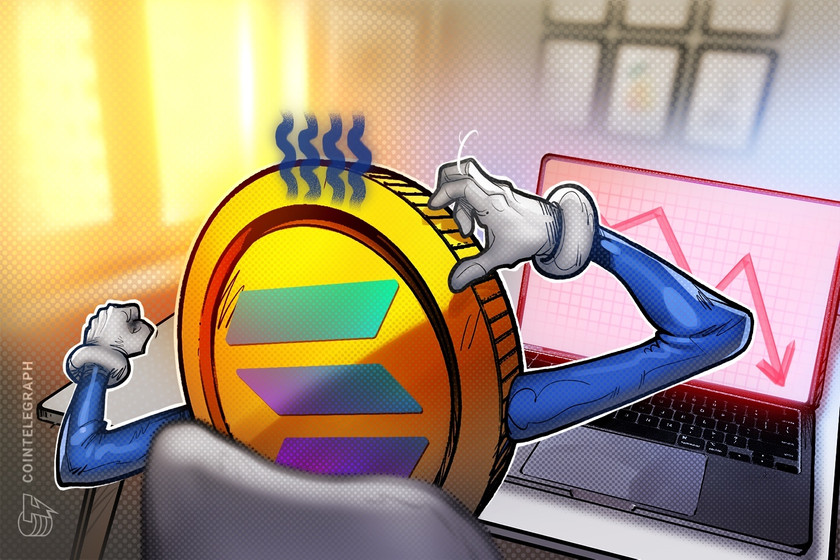Is Solana a ‘buy’ with SOL price at 10-month lows and down 85% from its peak?


SOL price still faces headwinds from its Bitcoin correlation, macro risks as well as Solana’s downtimes.
Solana’s (SOL) price dropped on June 3, bringing its net paper losses down to 85% seven months after topping out above $260.
SOL price fell by more than 6.5% intraday to $35.68, after failing to rebound with conviction from 10-month lows.
Now sitting on a historically significant support level, the SOL/USD pair could see an upside retracement in June, eyeing the $40-$45 area next, up around 25% from its June 4 price.


60% SOL price decline ahead?
However, a rebound scenario is far from guaranteed and Solana faces headwinds from trading in lockstep with Bitcoin (BTC), the top cryptocurrency (by market cap) that typically influences trends across the top altcoins.
Notably, the weekly correlation coefficient between BTC and SOL was 0.92 as of June 4.


What’s more, Solana is likely to see even bigger losses than BTC if Bitcoin falls deeper below its current psychological support level of $30,000.
Meanwhile, the Federal Reserve looks determined to raise benchmark interest rates and reduce its balance sheet. As a result of this hawkish policy, riskier assets like Bitcoin have room to go lower, hurting Solana’s bullish prospects.
Breaking below SOL’s current support level — around $35 — raises the chances for a decline toward the $18-25 range, which acted as a strong support area in March-July 2021, and preceded a 1,200% price rally, as shown below.


This bearish scenario would put SOL almost 60% below the price on June 4.
Solana network outages
The bearish outlook for SOL also comes as the Solana blockchain faces repeated outages, thus leaving its network practically unusable for its key “dapps,” including lending protocol Solend and decentralized exchange Serum, for hours.
Solana’s latest software glitch appeared on June 1 that shut down the network for 4.5 hours. The blockchain’s biggest outage happened in January and was down for almost 18 hours.
Validator operators successfully completed a cluster restart of Mainnet Beta at 9:00 PM UTC, following a roughly 4 and a half hour outage after the network failed to reach consensus. Network operators an dapps will continue to restore client services over the next several hours.
— Solana Status (@SolanaStatus) June 1, 2022
The outages risk spooking investors to the benefit of Solana’s competition and have already coincided with several traders rotating their capital elsewhere.
Just sold all of my $SOL for $ADA. Solana is a great project but personally I cant in good faith continue to invest in a layer 1 that shuts down on a frequent basis (partial and major outages about 11 times).
— $Smac07_NFT$ (@Shawn_Deezy07) May 31, 2022
Miles Deutscher, an independent market analyst, believes crypto investors have become cautious after witnessing the recent Terra fiasco. Nonetheless, the analyst asserts that Solana’s outages would decrease over time as the network matures.
Related: Alchemy announces support for Solana Web3 applications the day after blockchain halted
“But if they fail to stifle such events, then other L1s [layer-1 blockchains] will continue to eat away at its market share,” he noted.
8/ However, the reasons I like Solana still stand:
• Scales using a single global state (liquidity isn’t fragmented).
• Low cost and fast (despite handling the most transactions of any chain).
• 3rd most developed on chain (Electric Capital)
• Large list of VC backers— Miles Deutscher (@milesdeutscher) June 2, 2022
The views and opinions expressed here are solely those of the author and do not necessarily reflect the views of Cointelegraph.com. Every investment and trading move involves risk, you should conduct your own research when making a decision.













